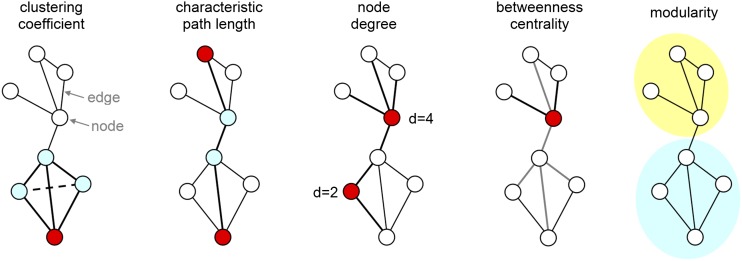Figure 2.
Fundamental graph metrics. Brain networks can be described as a graph consisting of elements (nodes) and their connections (edges). In macroscopic brain networks, the nodes correspond to brain regions and edges to the fibre bundles connecting them. The clustering coefficient of a node is given by the fraction of triangles around an individual node. The average clustering coefficient of the entire graph is used as a measure of segregation, representing the degree to which the network is organized into functionally distinct groups. The characteristic path length of a graph is defined as the average number of steps required to travel between two nodes of the graph; it is commonly used as a measure of integration, describing the ability of a network for distribution of information. The degree of a node is the number of edges attached to that node. The betweenness centrality of a node reflects the (relative) number of shortest paths between all node pairs that pass through it. The modularity of a graph describes the extent to which the graph can be subdivided into weakly linked clusters of densely interconnected nodes.

